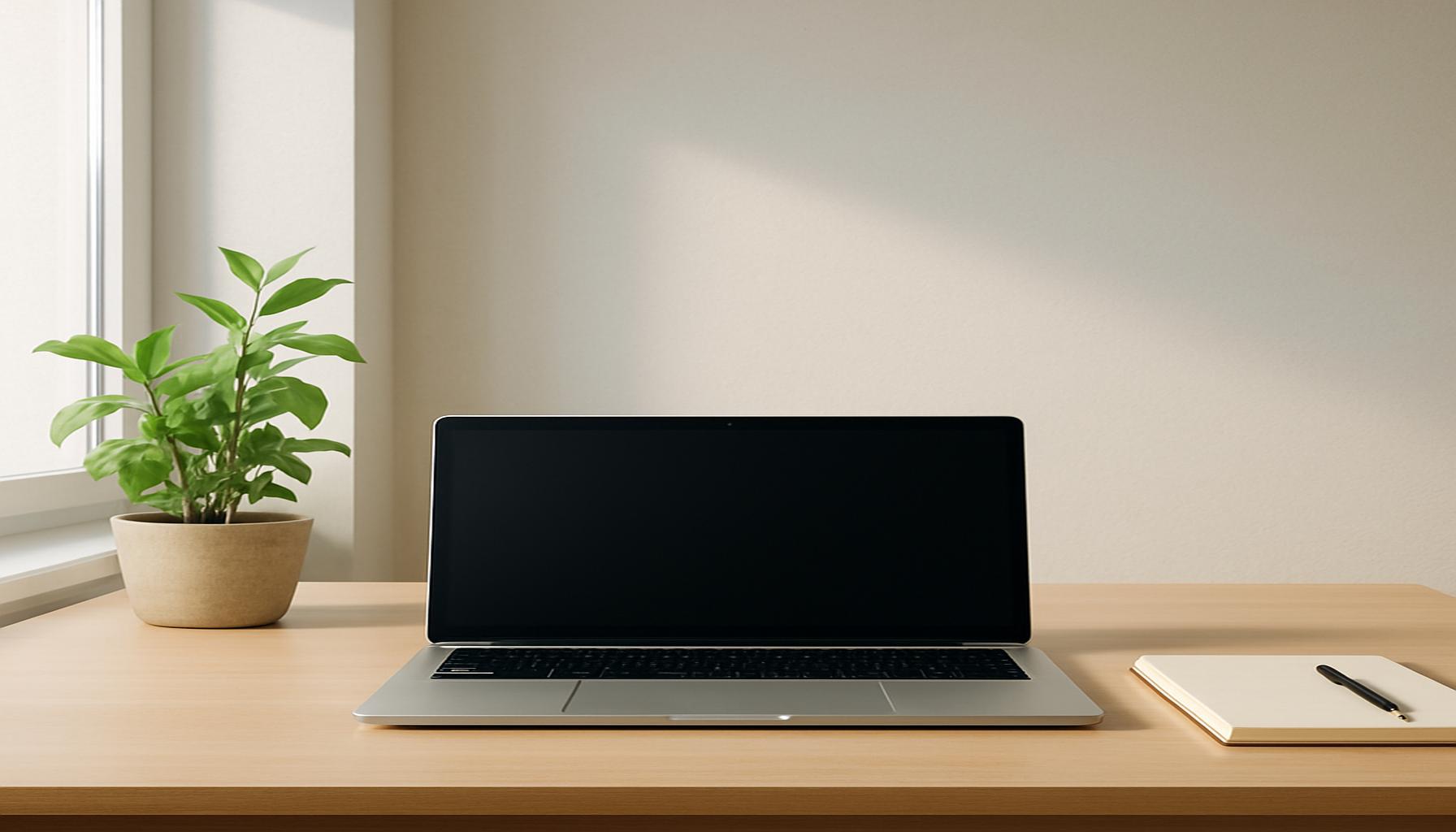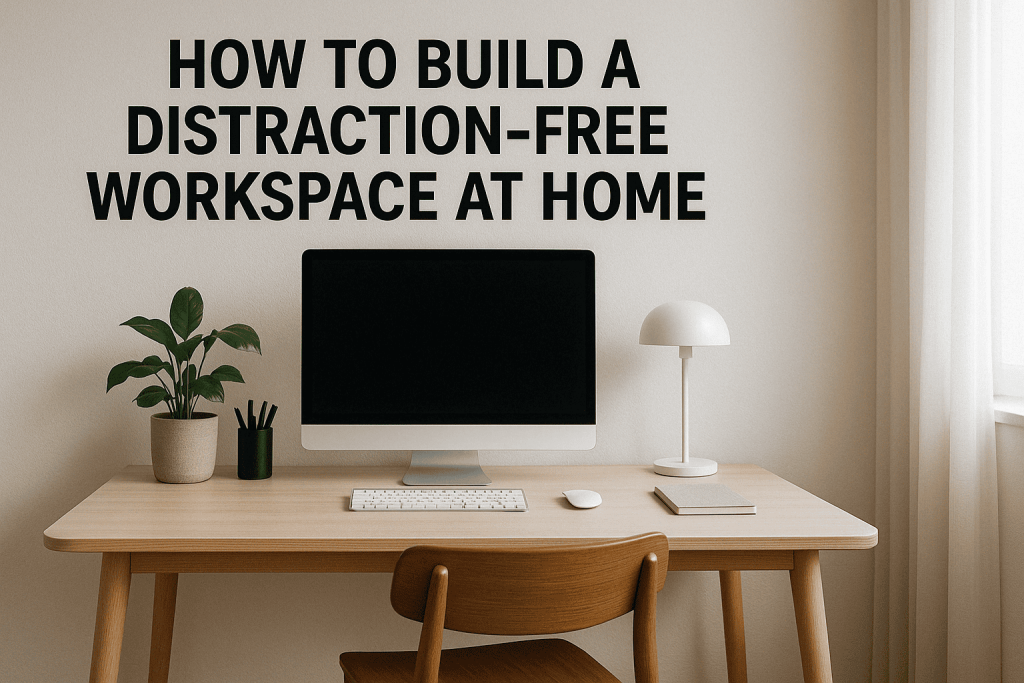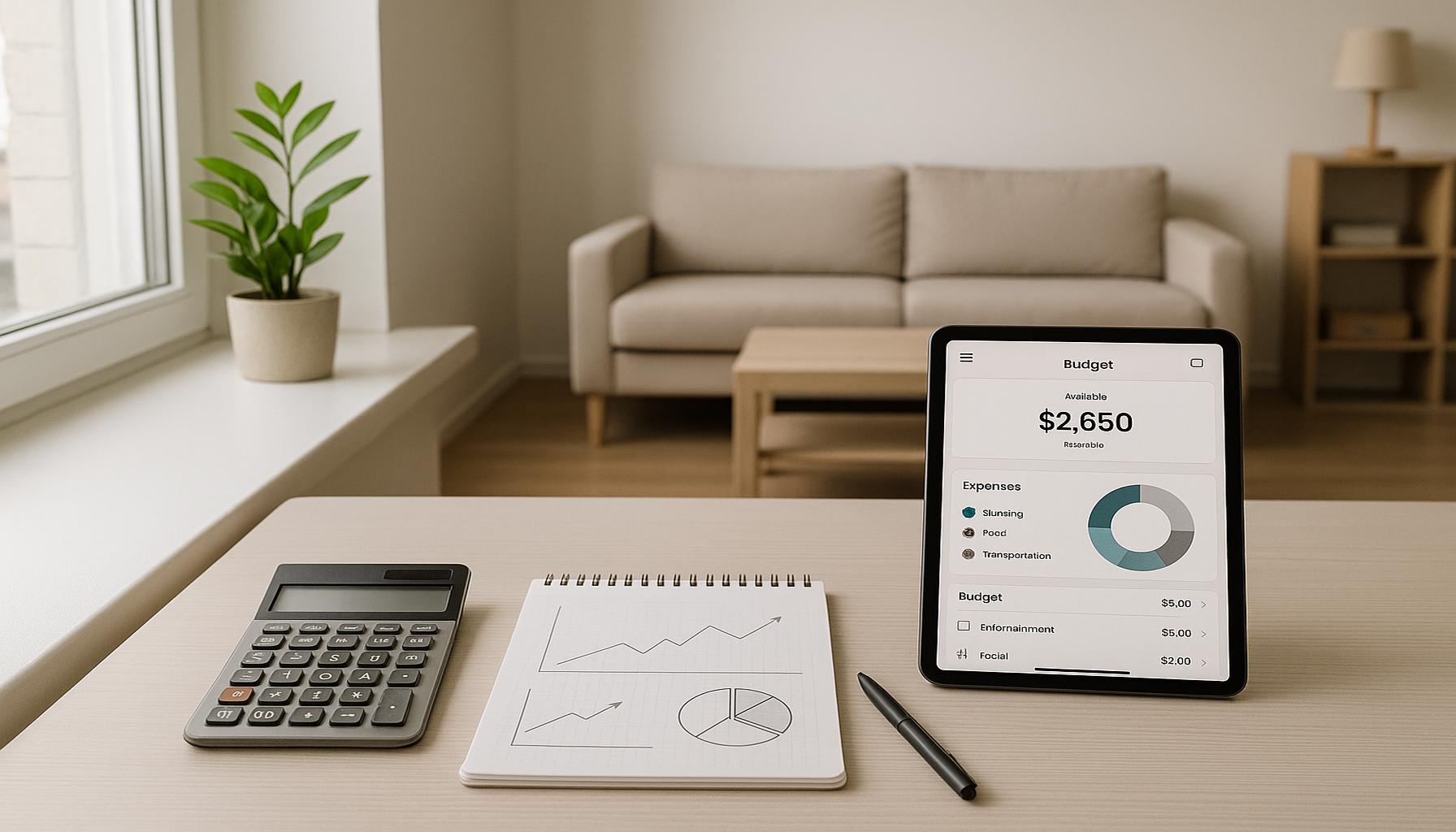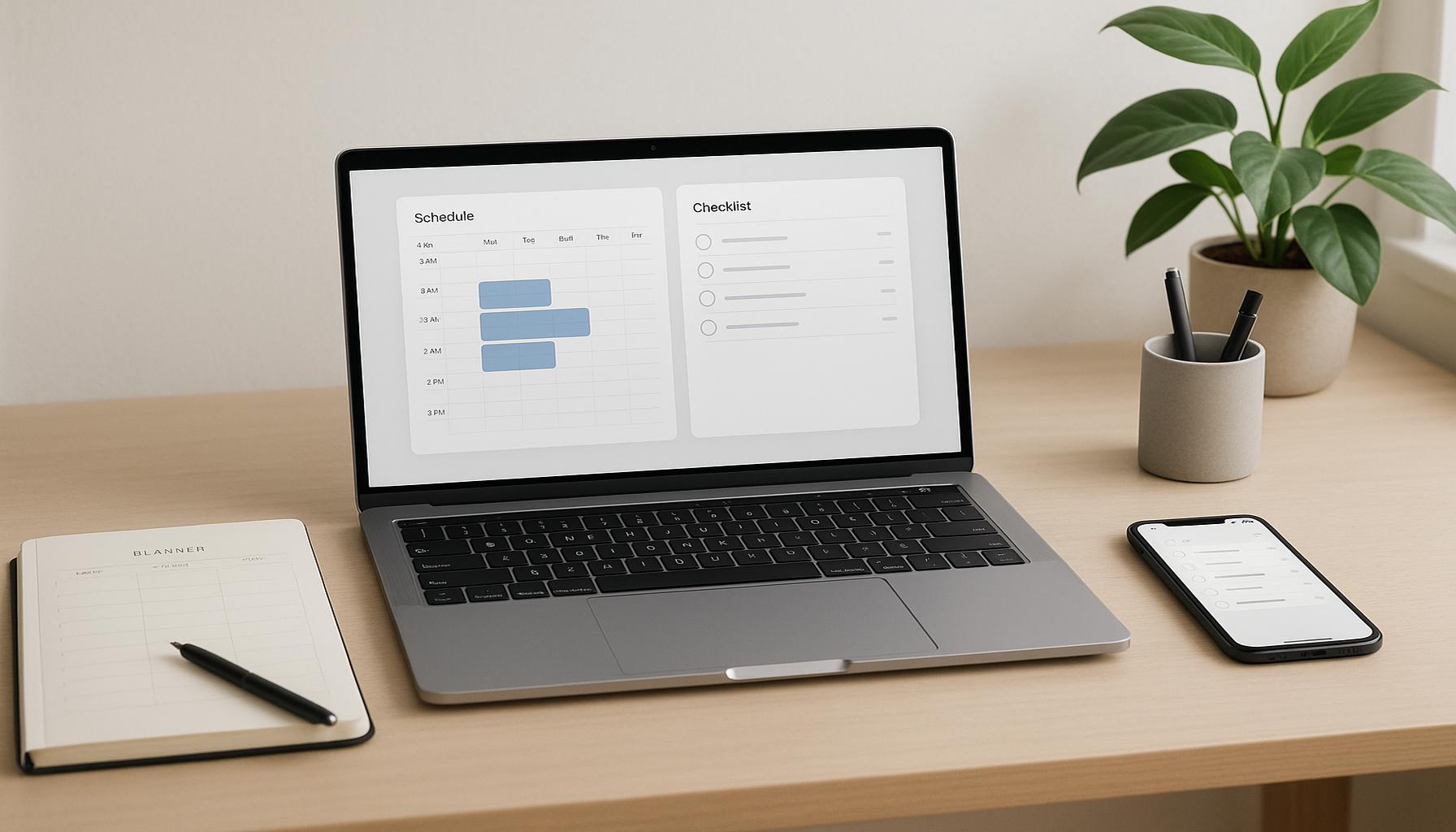Digital Minimalism: How to Reduce Online Distractions to Increase Personal Efficiency

Understanding Digital Distractions
In today’s fast-paced world, digital distractions are a pervasive challenge that many Americans face on a daily basis. With notifications from emails, texts, and social media clamoring for your attention, it’s no wonder that staying focused has become increasingly difficult. Research has shown that the average American spends over seven hours a day engaging with digital media, creating a landscape ripe for distraction. This constant barrage can lead to fragmented attention, increased stress, and decreased productivity.
What is Digital Minimalism?
Digital minimalism is not merely a trend but a mindset aimed at reclaiming our time and focus from the clutches of pervasive digital noise. This approach encourages individuals to critically evaluate their use of technology and to prioritize meaningful online interactions. At its core, digital minimalism promotes the idea that not all digital engagements are beneficial or necessary. For example, consider the time spent scrolling through social media feeds only to feel more drained than satisfied. Digital minimalism challenges you to identify whether these activities truly add value to your life.
Practical Steps Towards Digital Minimalism
Implementing the principles of digital minimalism can be both liberating and empowering. Here are some effective strategies you can adopt:
- Audit Your Online Activities: Take a week to track how much time you spend on various apps and websites. Identify which activities are productive and which are merely distractions. For instance, if you find that you spend hours on Instagram without purpose, consider limiting your usage.
- Create Tech-Free Zones: Establish specific times and spaces in your home or work environment where digital devices are off-limits. This could be during family meals or in your bedroom to promote better sleep and deeper conversations.
- Set Boundaries: Designate certain hours of the day as work-focused periods, during which you ignore notifications and concentrate solely on your tasks. Using tools like “Do Not Disturb” can help by preventing interruptions from incoming alerts.
The Benefits of Embracing Digital Minimalism
Transitioning to a minimalist digital lifestyle yields numerous benefits. By prioritizing meaningful interactions and eliminating unnecessary distractions, you can experience:
- Enhanced Focus: With fewer distractions, you can immerse yourself in deep work, resulting in higher quality output.
- Greater Clarity: A simplified digital environment fosters mental clarity, allowing you to think critically and creatively without the clutter of excess information.
- Increased Peace of Mind: Reducing digital chaos contributes to lower stress levels and a more balanced life, where you can engage with the real world more fully.
As this digital age continues to evolve, it becomes ever more essential to find a balance between utilizing technology and protecting our mental well-being. By understanding the concept of digital minimalism and incorporating its principles into your daily life, you have the power to take control of your attention in a world filled with distractions. The journey may be challenging, but its rewards—a more focused, intentional, and fulfilling life—are undoubtedly worth pursuing.

DIVE DEEPER: Click here to discover how decluttering can transform your mindset
Identifying Your Digital Overload
In today’s fast-paced digital age, many individuals find themselves constantly inundated with notifications, updates, and an endless stream of information. This phenomenon, known as digital overload, extends beyond merely feeling overwhelmed by notifications; it often stems from our ingrained behaviors as we navigate through the digital landscape. Our devices, which were once thought to enhance our productivity, can inadvertently create an environment where maintaining focus becomes increasingly challenging. Understanding how these distractions impact not just our efficiency, but also our mental well-being, is the first crucial step toward cultivating a healthier digital lifestyle.
A recent study revealed that nearly 60% of American adults believe that social media significantly disrupts their ability to concentrate on tasks. This statistic emphasizes the pressing need for a thorough self-assessment of our technology habits. For instance, consider how many times a day you pick up your phone to check notifications. Are you truly using those apps and devices to your advantage, or do they serve as obstacles that sap your productivity and energy? Such reflection can lead to profound insights about your digital usage patterns.
To effectively combat these tendencies, implementing practical strategies can help streamline the digital engagement process and reduce overload. Here are some actionable steps to consider:
- Limit Social Media Usage: Rather than aimlessly scrolling through endless social media feeds, set distinct boundaries around how much time you allocate to these platforms daily. Many smartphones now feature built-in screen time trackers that allow you to monitor your usage. Use these tools proactively to establish dedicated time slots for social media engagement, ensuring that your interaction serves a clear purpose.
- Unsubscribe from Unnecessary Emails: A cluttered email inbox can severely impede your workflow and efficiency. Take the time to unsubscribe from newsletters, promotional content, and other communications that are no longer relevant to you. Reducing the volume of incoming messages minimizes distractions from vital correspondence, allowing you to focus on what truly matters.
- Turn Off Non-Essential Notifications: Notifications from various apps can continuously tug at your attention, leading to a fragmented workday. Strategically assess which notifications genuinely require your immediate response and disable those that don’t directly impact your personal and professional responsibilities. This approach can create a more tranquil digital environment conducive to concentration.
Recognizing and addressing your digital distractions is vital for reclaiming control over your online experience. By cultivating a more intentional digital presence, you align your technology use with both personal aspirations and professional objectives. As you deepen your awareness of how technology infiltrates your daily life, you can take meaningful steps toward simplifying your online interactions.
In a world rife with distractions, striving for a more intentional approach to digital engagement is more than a luxury; it is essential for achieving balance. As we delve into the principles of digital minimalism, it becomes clear that this movement is not about rejecting technology outright, but rather about embracing a purposeful integration that enhances our lives rather than detracting from it. Embracing this philosophy may lead to improved focus, increased productivity, and enhanced mental health outcomes.
| Advantage | Description |
|---|---|
| Enhanced Focus | By limiting digital interruptions, individuals can achieve greater concentration on essential tasks, leading to improved productivity. |
| Improved Time Management | Implementing digital minimalism allows users to prioritize their time, reducing the hours lost to non-productive online activities. |
Integrating the principles of digital minimalism can significantly transform one’s approach to daily tasks. The key lies in fostering an environment where distractions are minimized, encouraging users to prioritize tasks effectively. Techniques such as decluttering digital spaces—removing unused apps and unsubscribing from relentless notifications—play a critical role. Moreover, adopting a focused mindset through pre-defined online timings can enhance productivity levels. Instead of succumbing to the endless scroll, users become intentional with their screen time, reserving it for tasks that align with their goals and aspirations. Emerging research underscores the connection between a clutter-free digital environment and heightened motivation, revealing that users who practice digital minimalism often report enhanced creativity and satisfaction in their work. Embracing these strategies opens the door to a more efficient and fulfilling online experience, enticing readers to delve deeper into the practice. This journey not only benefits personal efficiency but gradually cultivates a deeper sense of well-being as distractions diminish, revealing the beauty of uninterrupted focus.
DISCOVER MORE: Click here to simplify your life
Implementing Digital Minimalism Strategies
Once you’ve identified the sources of your digital overload, the next step is to actively implement strategies that promote digital minimalism. This approach seeks to prioritize quality over quantity, allowing you to engage with technology in a way that enriches rather than detracts from your life. By embracing simple lifestyle shifts, you can enhance your focus and ultimately improve your productivity.
One effective strategy to adopt is the One Hour Focus Rule. This method encourages dedicating a full hour to a single task without any digital interruptions. Research has shown that individuals who engage in focused work for extended periods tend to achieve higher levels of productivity. During these dedicated hours, turn off all notifications, close irrelevant tabs, and distance yourself from social media. This concentrated effort can lead to a significant boost in your output and a deeper engagement with your work.
Furthermore, the Pomodoro Technique can be an excellent companion to the One Hour Focus Rule. This time management method advocates for working in short bursts—typically 25 minutes—followed by a 5-minute break. After completing four cycles, take a longer break of 15 to 30 minutes. Implementing this technique helps prevent burnout and maintains mental clarity, allowing you to tackle more complex tasks without succumbing to distractions.
Another important aspect of digital minimalism is the establishment of a digital decluttering routine. Just as we regularly clean out our physical spaces, our digital environments also require periodic cleaning. Set aside time each month to review your digital files, applications, and subscriptions. Delete or archive what is no longer in use. This practice not only enhances your digital organization but also reduces complexity. For instance, research indicates that a streamlined digital workspace can significantly lower stress levels and improve decision-making capabilities.
- Adopt Alternative Communication Tools: Consider utilizing apps that facilitate focused interactions, such as Trello or Slack, which allow for organized team communication and project tracking without the noise of social media. This helps ensure that your online communication remains purposeful and relevant.
- Practice Mindful Consumption: Engage with content that provides genuine value to your life and career. Instead of mindlessly scrolling through numerous articles or videos, select a few that enhance your skills or interests. Aim for quality over quantity in the content you consume.
- Schedule Tech-Free Time: To foster a healthier relationship with technology, designate certain hours—such as evenings or weekends—as tech-free times. Use this opportunity to engage in offline activities that promote creativity and personal development, such as reading, exercising, or spending time with family. This intentional break from the digital world can rejuvenate your mind and refresh your focus.
Perhaps one of the most compelling reasons to embrace digital minimalism is the profound effect it can have on mental health. Studies have indicated that reduced screen time can lead to lower levels of anxiety and depression. As you navigate this shift, remain aware of your emotional responses to digital consumption. By intentionally choosing how you engage with technology, you wield the power to significantly enhance your overall well-being.
Through these strategies, individuals can regain control over their digital lives. Digital minimalism is about more than merely cutting back; it’s a lifestyle choice that champions intentionality and mindfulness in a world often dominated by noise and distraction. As you embark on this journey, you’ll likely find that simplifying your digital interactions paves the way for richer personal and professional experiences.
DIVE DEEPER: Click here to unlock strategies for a simpler online life
Conclusion
In an age where digital distractions are pervasive, the significance of embracing digital minimalism cannot be overstated. By making intentional choices about how we engage with technology, we empower ourselves to reclaim precious time and boost our personal efficiency. The strategies discussed—including the One Hour Focus Rule, Pomodoro Technique, and digital decluttering—serve as practical tools in this journey towards a more focused and fulfilling digital existence.
Moreover, the impact of reduced digital noise extends beyond mere productivity; it can improve mental well-being by lowering anxiety levels and fostering greater satisfaction with life. As you cultivate a lifestyle grounded in digital minimalism, you create space not only for enhanced professional output but also for meaningful interactions and personal growth.
As you reflect on your digital habits, consider how adopting mindful consumption and tech-free periods can rejuvenate your mind. The choices you make today will pave the way for a future enriched by intentional experiences, deeper relationships, and innovative thinking. Thus, the journey towards digital minimalism is not just a personal endeavor; it is a necessary shift for anyone striving to navigate the complexities of modern life with clarity and purpose. Begin your transformation today, and you may find that simplifying your digital landscape opens up new avenues for creativity, productivity, and overall happiness.


